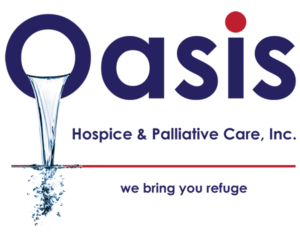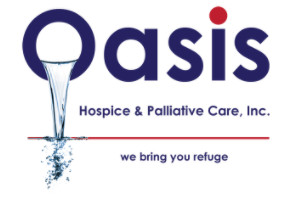Where is hospice care given?
A hospice service like Oasis Hospice care of Chicago is responsible for providing hospice care. A team of health care professionals from the hospice service will collaborate with the patient’s primary caregiver (usually a family member) to provide care and support 24 hours a day, seven days a week.
Who Provides Hospice Care?
The hospice service provides hospice care. The hospice service’s team of health care professionals will work with the patient’s primary caregiver (usually a family member) to ensure care and support is provided for the patient round the clock, seven days a week.
Primary Caregive for Hospice Services
People in hospice are usually asked to select a primary caregiver, someone they trust to assist them in their final days. In the majority of cases, this is a family member or close friend. When developing a care plan, the primary caregiver works alongside the hospice team and the patient to take into consideration the patient’s specific needs and preferences. As long as the patient’s primary caregiver is still making all of the decisions, he or she will continue to be the main person guiding the patient’s decisions.
Even in patients receiving in-home hospice care, the primary caregiver, who is usually the patient’s primary caregiver, is in charge of most of the patient’s physical care, as well as keeping track of the patient’s symptoms and other problems. The primary caregiver may take on some of the responsibilities related to physical care, while other family members or hired caregivers assume care of the other areas. Communication with the hospice team, as well as scheduling caregivers in the home, is a responsibility held by the primary caregiver.
Hospice care is provided for patients, particularly those in the final stages of life, in locations other than their homes. These patients’ primary caregivers are members of the hospice care team. A member of the patient’s healthcare team is present at team meetings, listening to needs and making decisions about care.
If there is no family available to take on the primary caregiver role, the patient must work with the hospice team member who is the first to bring up the topic of services. In addition, they will have to speak with their insurance company. Although this may not be correct, it is possible that other care setting options are available, dependent on insurance coverage and the types of hospice agencies or programs that are available.
Hospice Team of Professionals
In the vast majority of cases, an interdisciplinary health care team is in charge of providing hospice care. It also means that there are numerous health care providers whose sole purpose is to assist with patient care, based on the needs and desires of each patient. In the majority of cases, the oncologist or primary care doctor is in charge of patient care, though the cancer doctor and/or the hospice doctor may also be involved. Doctors, nurses, social workers, counselors, dietitians, home health aides, clergy, therapists, and trained volunteers all work together to provide advice and guidance to the patient and primary caregiver on what care they will need. CNA reports will be provided along with family and care team meetings to keep everyone up to date on the patient’s condition, so that the patient’s basic needs are always met. As well as palliative care to relieve symptoms and provide social, emotional, and spiritual support, hospice care includes palliative care.
To those patients receiving in-home hospice care, the hospice nurses visit them frequently and are always available by phone for consultation throughout the day, every day of the week. The other members of the hospice team will visit the patient, if necessary, based on the patient’s needs and insurance coverage. Patients who are getting hospice care in locations other than their homes may have options like frequent visits or around-the-clock care depending on the kind of care setting, the patient’s needs, and insurance coverage.
The staff members at a hospice are always kind and caring. They have an above-average capacity to communicate and understand the needs of others, and want to help families during the last stages of an advanced illness. This group of professionals, known as Palliative Care Providers, have had extensive training to handle the special challenges surrounding death and dying, and they’re provided with ongoing training and support to help with the emotional demands of the job.
Hospice volunteers are essential to the success of the hospice team as well. They play an important role in advance planning and providing palliative and hospice care in the United States. Volunteers can be health professionals or nonprofessionals, like lay people, who provide a variety of services, from caring for their own loved ones to working in the hospice office or making contributions to the charity.
Where is Hospice Care given? – Location and Setting
For hospice agencies, most of their services are provided in the patient’s home. Another option is free-standing or independent facilities specially designed to provide hospice care. These facilities are not affiliated with other health care facilities and typically have on-site care. Alternatively, programs based in hospitals, nursing homes, assisted living centers, or other health care systems can provide hospice care. In some hospice facilities, the inpatient and in-home services are offered as part of the same program.
Hospice organizations frequently provide services in the patient’s home. Hospice care can also be provided by free-standing or independent hospice facilities, as well as programs based in hospitals, nursing homes, assisted living facilities, or other health care systems. Some hospice organizations provide both in-home and in-patient care.
While this definition covers everything, in any setting, hospice care is always made available for 24 hours a day, 7 days a week. Your doctor, hospital social worker, case manager, or discharge planner can assist you in making an informed decision regarding which type of hospice program would be best for you and your family.
Hospice Care at Home
The vast majority of people get end-of-life care at home. Additionally, people who live in facilities like residential facilities, certain types of assisted living, or nursing homes can access hospice care at these locations, too. If it’s deemed that hospice care is required for a patient who is living in one of these facilities, it may be classified as in-home care because the facilities are considered the patient’s homes. The types of health insurance coverage one obtains can vary on this.
The majority of hospice programs will provide home hospice services. Many of the hospice programs provide care staffed by nurses, doctors, and other professionals, but the primary caregiver is almost always a family member or friend who’s responsible for around-the-clock supervision of the patient. Because this person is likely to spend a lot of time with the patient, they will need to be available most of the time. They will also need to be prepared to provide a significant amount of hands-on care. Primary caregivers still need to be on hand when care is provided in another facility, but it may be possible for staff to help provide some of the physical care depending on the type of facility and insurance coverage for hospice services.
It is critical to understand that home hospice care necessitates that a family member or close friend be at home around the clock, seven days a week. Individuals who reside alone or whose spouse or adult children have full-time jobs may have difficulties accessing this service. Although most of the time, a combination of creativity and good teamwork can help to overcome this issue, it is more often than not the case that simply getting a babysitter can be enough. Members of the hospice staff will be visiting frequently to see how the patient, their family, and the caretakers are doing. They will ensure that any symptoms are kept under control and they will provide any treatment and services that may be needed.
The process of care begins when the patient is admitted to the hospice program, which means that a hospice team member visits the patient at home to learn about the patient and their needs. They will visit you in the hospital if you have decided to receive hospice care, but you have not yet been discharged from the hospital. When the staff of the facility or someone you have chosen is available, your primary caregiver will be responsible for your personal care, or for scheduling others to help with your care. Additionally, the hospice team may be able to find volunteers to stay with the patient whenever they are needed. To provide for a regular medical assessment of patients in hospice, home care nurses set up hospice nursing visits.
In situations that necessitate around-the-clock care, home hospice programs have on-call nurses who are able to answer phone calls day and night, as well as making on-site visits, or sending out members of the hospice team in between scheduled visits. In order to provide hospice-level of nursing, pharmacy, and doctor services around the clock, Medicare-certified hospices must do so.
Inpatient hospices & free-standing or independent hospices
There are inpatient hospice facilities in many communities. These are most likely operated by a hospice agency, which provides in-home care as well. Or, they can be stand-alone, independent-owned hospices that offer in-home services, either separately or as part of a larger organization. Free-standing hospices are especially beneficial to patients who have no one to provide 24-hour physical care or for those who need around-the-clock assistance with activities of daily living. respite care (temporary care given to relieve a caregiver’s stress during times when the primary caregiver is not available) is also offered in some inpatient hospice facilities.
Hospice Care in Hospitals
Some hospitals include a hospice program in their services. Patients and their families will now have easier access to supportive services, allowing them to stay in close contact with a specialist, so they can begin to get control of their symptoms. Some hospitals have a specialized hospice unit, while others utilize a hospice team that comes to patients’ rooms on any nursing unit to see patients with advanced disease. A common feature of other hospitals is that the hospital’s own staff functions as the hospice team on the patient’s unit. The patient returns to in-home hospice care when they are again able to tolerate their surroundings.
Nursing home or long-term care facility-based hospices
In many nursing homes and other long-term care facilities, there are also small hospice units. It is possible that they may have on-site nursing personnel specially trained to provide care for hospice patients, or alternatively, they might arrange with home health agencies or independent community-based hospices to provide such care. The final choice is a good option for people who need hospice care but don’t have anyone to help take care of them at home.
What can Oasis Hospice Care do for the health of your Loved one?
Hospice doctor care is an extra layer of treatment for your loved one at home or in a care center, provided in collaboration with your family and their doctors. When a patient enters hospice care, they are surrounded by a team of people who can help start them with their physical, mental, and spiritual needs. The treatment for the patient’s terminal disease, as well as all medical equipment and supplies related to this condition, are given at no cost to the patient or his or her family.
Nurses and aides are available from Oasis Hospice & Palliative Care to help with health and personal care needs. Our social workers will assist the family in locating additional services (like grief support) and preparing for the end of life. Chaplains provide spiritual guidance and grief support. Volunteers step in and offer companionship visits to your loved one while allowing family members to relax. For those who need additional assistance, bereavement counselors are available. Contact us to find out how to start this care right away for your loved one.

